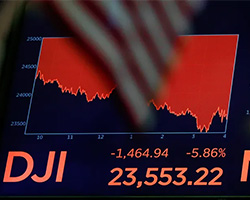Dow Jones Rises on Tech Surge, Gold Prices Await US Economic Indicators | Daily Market Analysis
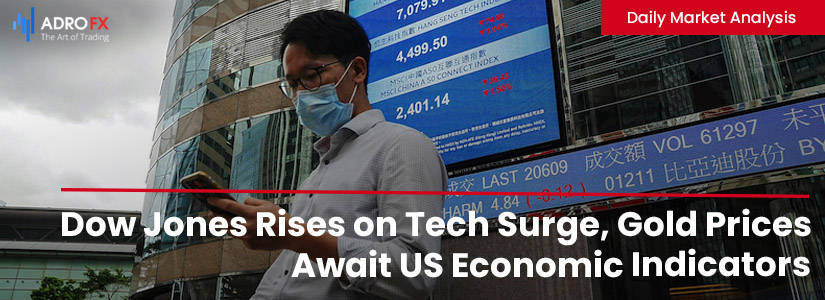
Key events:
- China - Manufacturing PMI (Jul)
- Eurozone - CPI (YoY) (Jul)
On Friday, the Dow Jones Industrial Average concluded with a gain, marking its third consecutive weekly victory as investors showed a strong interest in prominent tech and chip stocks. The surge came in response to a decline in Treasury yields, triggered by signs of decelerating inflation, which bolstered optimism that the Federal Reserve had likely delivered its final interest rate hike earlier in the week.
The Dow Jones Industrial Average rose by 0.5%, equivalent to a gain of 176 points, while the Nasdaq soared by 1.9%, and the S&P 500 climbed by 1%.
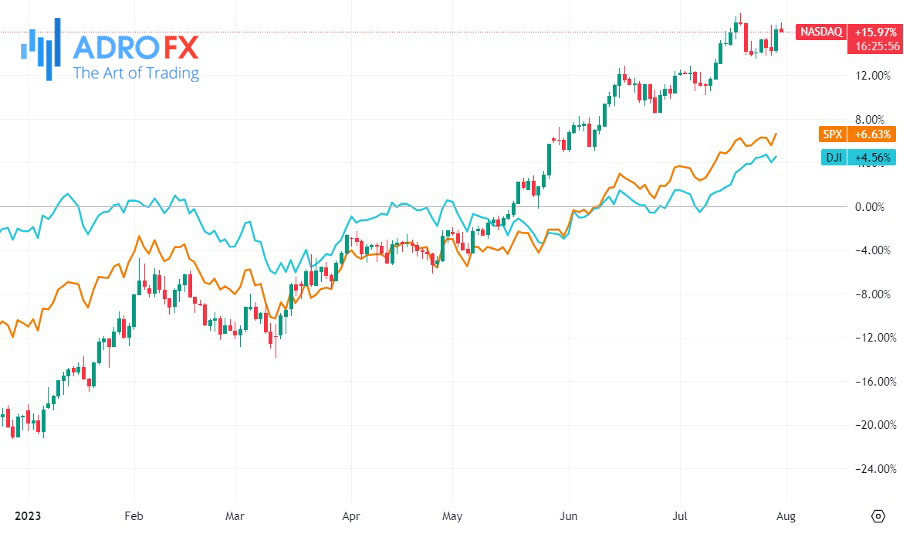
The surge was notably driven by significant gains in big tech companies, such as Apple Inc (NASDAQ: AAPL), Meta Platforms Inc (NASDAQ: META), Alphabet Inc Class A (NASDAQ: GOOGL), and Microsoft Corporation (NASDAQ: MSFT). The positive performance of these tech giants was supported by a decrease in Treasury yields, prompted by a key Fed inflation measure showing a more considerable slowdown than anticipated.
Specifically, the personal consumption expenditures exhibited a slowdown, growing at a 0.2% pace in June, compared to 0.1% in the previous month. Consequently, the annual pace for the month stood at 3%, significantly lower than the 3.8% recorded in the prior month. This data further strengthened the market's belief in a potential pause by the Federal Reserve in its monetary policy tightening.
As a result of the growing conviction in a Fed pause, the 2-year Treasury yield and 10-year Treasury yield both slipped, as investors adjusted their expectations and reduced the likelihood of further rate hikes in the near future.
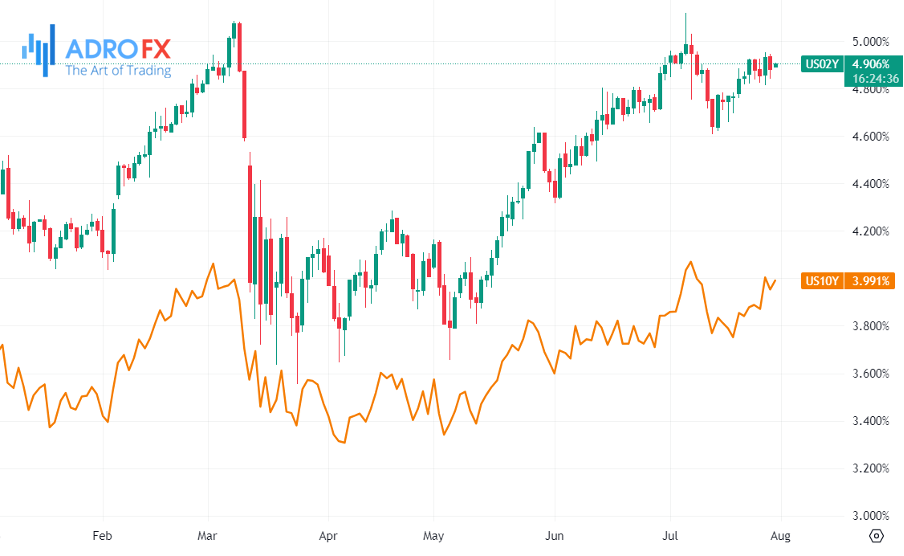
During a volatile week and month-end trading, the Dollar experienced a significant surge of 1.6% against the Japanese Yen, reaching 141.15 (from 139.50). However, its performance against other major and emerging market currencies was more mixed.
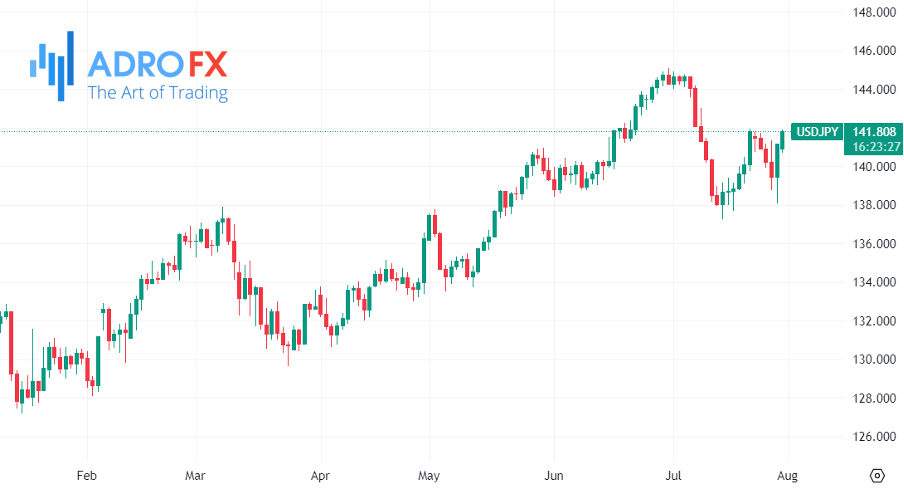
The Bank of Japan (BOJ) made an unexpected adjustment to its Yield Curve Control during its meeting. The BOJ announced its intention to buy 10-year Japanese Government Bonds (JGBs) at a yield of 1.0% every day, which resulted in market turbulence. Despite this tweak, Japan's Policy Rate remained unchanged at -0.10%.
Following the meeting, BOJ Governor Ueda clarified in a press conference that the adjustment was not a step toward rate normalization. He emphasized that the BOJ has no plans to raise rates and, in fact, aims to weaken the Yen.
In Australia, an unexpected decline in June Retail Sales and Producer Prices affected the Australian Dollar (AUD) negatively. The AUD dropped from its Friday opening level of 0.6710 to close at 0.6650.

The decline in June Retail Sales was particularly significant, showing a drop of -0.8% compared to the expected 0% growth. Additionally, Australia's Producer Price Index (PPI) on a year-on-year basis fell to 2.0% from the previous figure of 5.2%, missing estimates that had predicted 2.9%.
These events had a notable impact on currency markets, leading to fluctuations and uncertainties for investors during the mentioned week and month-end trading.
On Monday, gold prices remained within a narrow range as investors awaited further significant indicators on the state of the US economy for the week ahead. In the previous week, the price of the yellow metal had closed relatively unchanged after the Federal Reserve raised interest rates as expected and reaffirmed its plans for at least one more rate hike later in the year.
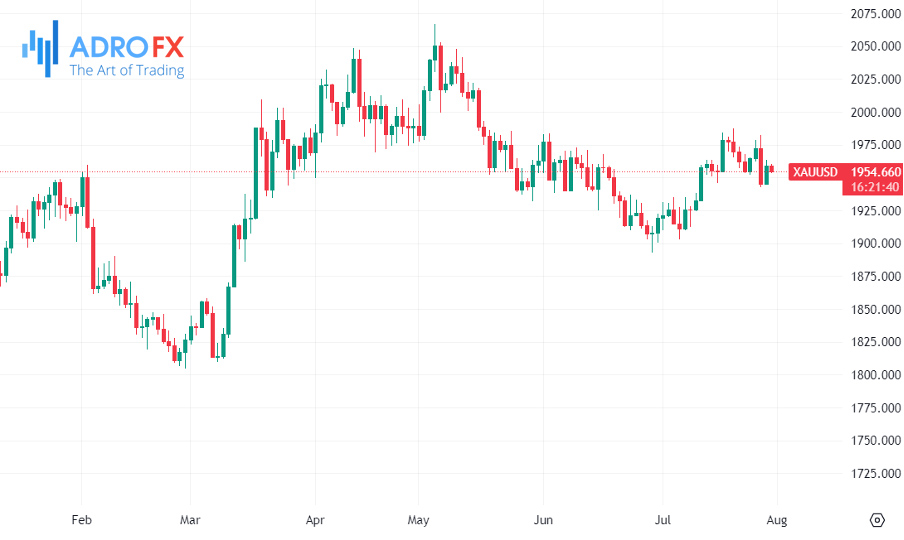
However, a report on Friday revealed that inflation, particularly measured by the Fed's preferred gauge, eased further in June. This development could potentially lead to a less aggressive approach from the central bank in terms of rate hikes.
Investor attention this week is primarily focused on the release of key US nonfarm payrolls data on Friday, as it is anticipated to provide more insights into the strength of the labor market. Despite the Fed's intention to cool down the labor market with its interest rate increases, US employment has demonstrated robustness throughout the year. This situation may prompt the central bank to adopt a more hawkish stance.
Minneapolis Fed President Neel Kashkari commented on Sunday that any future rate hikes would largely depend on incoming data, suggesting a data-driven approach. He also mentioned that the labor market was expected to experience some cooling this year, and expressed a positive outlook on inflation.
For gold, any potential pauses in the Fed's rate hike cycle could have a positive impact, as rising interest rates tend to increase the opportunity cost of holding the precious metal. However, strong US economic readings from last week had put downward pressure on gold prices, as concerns arose that the strength in the US economy might provide enough leeway for the Federal Reserve to continue hiking rates.

